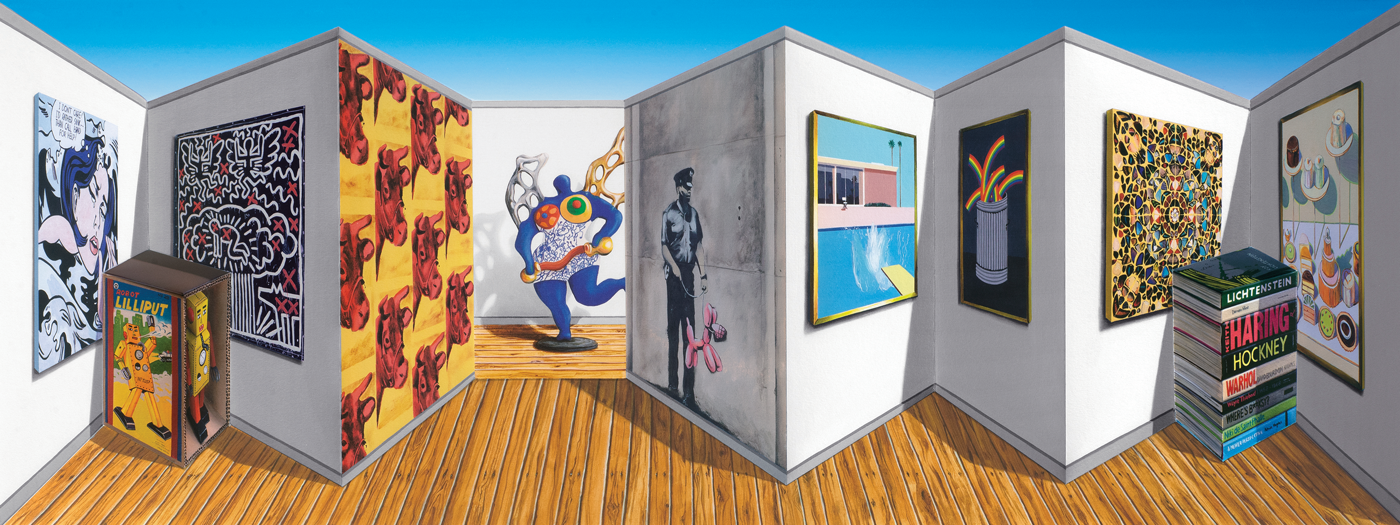
Patrick Hughes (b.1939) is acknowledged as being one of the major artists of contemporary British art.
He has been linked with the British Surrealists and Pop Art. However, in that very British way Patrick Hughes has followed his own particular artistic path.
He has been producing his reverse perspectives since 1970, calling them ‘reverspectives’. Speaking about his reverspectives Hughes is quoted as saying “When the principles of perspectives are reversed and solidified in sculpted paintings [and mixed media] something extraordinary happens; the mind is deceived into believing the impossible, that a static painting can move of its own accord.”
Born in Birmingham in October 1939 Patrick Hughes claims inspiration from his childhood whilst staying at his grandmother’s house. Growing up during the Second World War he would shelter from the bombing with his mother in a cupboard under the stairs. The reverse perspective afforded from seeing the stairs from below, and the infinite perspective formed by standing between two mirrors at his grandmother’s house speak into his reverspectives.
Today Patrick Hughes lives and works in London. His works are represented in many international collections including the British Library and the Tate Gallery.
The playful and visually arresting mixed media 3D multiple, ‘Poppish’, you see here was sold at Toovey’s for £2250. It initially appears to be a flat surface but even subtle movement by the viewer reveals the three-dimensional surface which underpins the composition, accentuating the depth of perspective which appears to shift with remarkable speed creating a sense of movement.
The illusion is created by depicting the scene in reverse to the relief surface – the most distant parts of the gallery interior are painted and printed on the bits of the relief surface which project the farthest. The rectilinear forms of the art gallery and paintings serve to heighten the illusory impact.
The surreal gallery space with its references to artists, in this case Roy Lichenstein, Damien Hirst, Keith Haring, David Hockney, Andy Warhol, Bansky and Hughes himself with his rainbow filled dustbin, is a common theme.
Patrick Hughes work allows us to explore our place in the world and our understanding of the space we inhabit in each moment of our lives.
Prints and editions range in date from the 15th to the 21st century and are one of the strongest markets at auction.
I remain excited by how strong the interest has been during the lockdown for a wide range of collectors’ items, antiques and art.
By the time you read this Toovey’s will have reopened and be able to welcome the public at its salerooms again by appointment. We have a series of specialist sales already scheduled for the coming weeks so do phone or email us to make an appointment to meet our valuers, virtually or in person.



